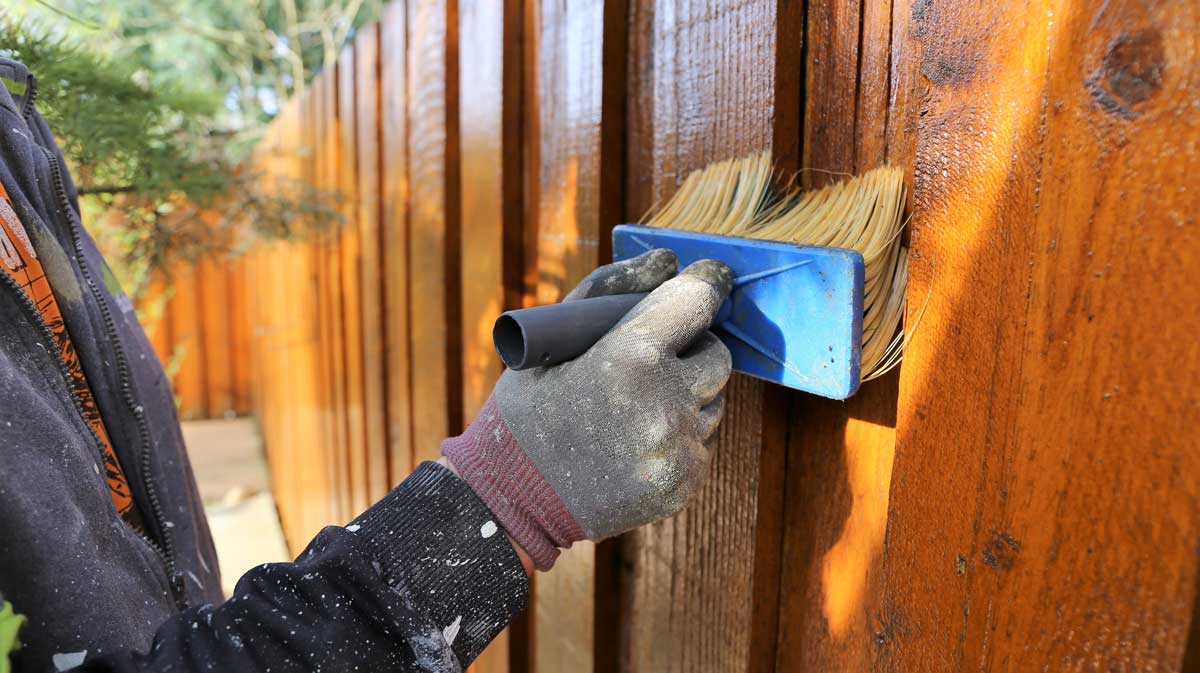How to Achieve Professional Results With Deck Staining
The procedure of changing an aging deck right into a revitalized outdoor area demands extra than just a layer of discolor; it necessitates a methodical approach and focus to detail. From selecting the suitable tarnish for your deck's wood type to understanding the application method, each step plays an essential role in the last result.
Choosing the Right Discoloration
Choosing the appropriate tarnish for your deck is an essential choice that significantly affects the overall look and longevity of the surface. When picking a discolor for your deck, it is essential to take into consideration both the visual choices and the useful facets of the item. Strong shade stains, on the other hand, provide the most UV security and use a large variety of color choices however will completely hide the timber grain.

Additionally, consider the kind of wood your deck is made from, as different stains are created to work best with specific timber kinds. Comprehending the level of maintenance you are eager to devote to is also crucial, as some discolorations might need more constant reapplication than others. By very carefully considering these aspects, you can pick a discolor that not only boosts the appearance of your deck but additionally secures it for years ahead.
Preparing the Deck Surface Area
When thinking about deck staining, the first action in the direction of accomplishing specialist outcomes involves extensively preparing the deck surface. Correctly preparing the deck surface is essential as it ensures that the stain sticks well and supplies durable protection to the wood. The very first job in preparing the deck surface is cleansing. Make use of a pressure washing machine or a deck cleaner to get rid of dirt, mildew, and old discolorations (fence cleaning near me). Enable the deck to dry completely before continuing to the next action.
After cleaning, check the deck for any harmed or rotten boards. Change these boards to ensure the architectural honesty of the deck. Fining sand the deck surface area is likewise important to smooth out any harsh areas and open the timber pores for much better discolor infiltration. Utilize a medium-grit sandpaper to sand the deck in the direction of the timber grain.
Finally, safeguard any kind of nearby plants, furniture, or surfaces from prospective damage by covering them with plastic bed linen or ground cloth. Making the effort to completely prepare the deck surface area establishes the structure for a successful staining task and guarantees professional-looking results.
Using the Spot
To accomplish an expert coating when tarnishing a deck, careful application of the stain is crucial. Apply the stain evenly, complying with the wood's grain to boost the deck's all-natural elegance. By using the tarnish diligently, you'll accomplish a professional-looking surface that boosts both the appearance and longevity of your deck.
Guaranteeing Appropriate Drying Time
Making sure ample drying out time post-staining is important to the general success of the deck task, as it enables the stain to correctly set and bond with the timber surface area. Rushing this phase can bring about a range of issues, consisting of unequal coloring, inadequate attachment, and a shorter life expectancy for the coating. The drying time called for can vary based upon variables such as the kind of tarnish made use of, climate condition, and the porosity of the timber. As a basic standard, the majority of deck stains will need at least 24-48 hours to completely dry completely.
During this drying out duration, it is vital to keep the deck surface area cost-free from any foot traffic, furnishings, or various other items that may disrupt the coating. Furthermore, it is crucial to avoid direct exposure to moisture, such as rain or dew, which can compromise the drying process. When gently scrubed, properly dried discolor will certainly really feel completely dry to the touch and will not leave any residue on your fingers. Making the effort to guarantee comprehensive drying will certainly contribute significantly to the durability and look of your stained deck.
Keeping Your Stained Deck
Appropriate upkeep of a tarnished deck is More Info essential for protecting the integrity and look of the finish achieved via comprehensive drying out - deck staining near me. To preserve your stained deck properly, routine cleaning is essential. Sweep away debris and dirt consistently to avoid staining and mold growth. Think about using a mild cleaning agent combined with water to scrub the surface and get rid of any kind of built-up grime. It is advisable to clean your deck a minimum of twice a year, preferably in the springtime and fall, to keep it looking vivid and fresh.

Verdict
In verdict, attaining specialist outcomes with deck discoloration includes choosing the proper discolor, appropriately preparing the deck surface area, using the tarnish evenly and regularly, permitting enough drying out time, and preserving the tarnished deck on a regular basis. By adhering to these actions meticulously and diligently, you can guarantee a perfectly discolored deck that enhances the look and durability of your outdoor room.

Appropriate upkeep of a stained deck is link important for preserving the stability and look of the finish achieved through extensive drying.